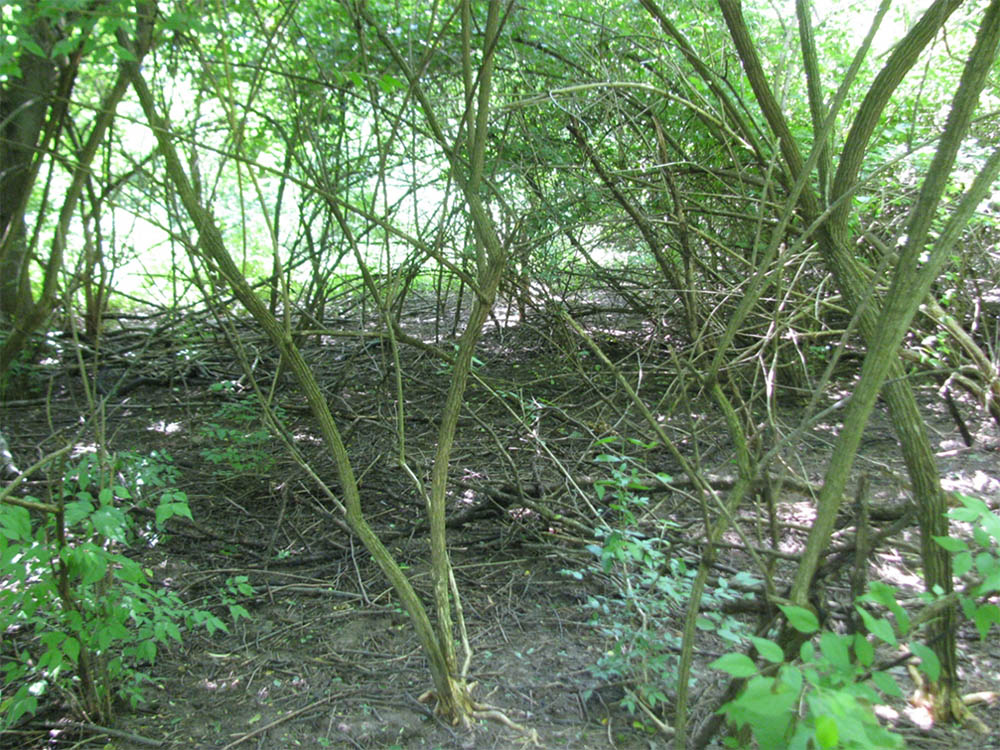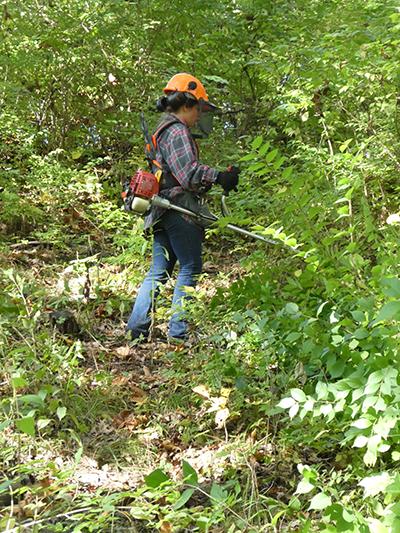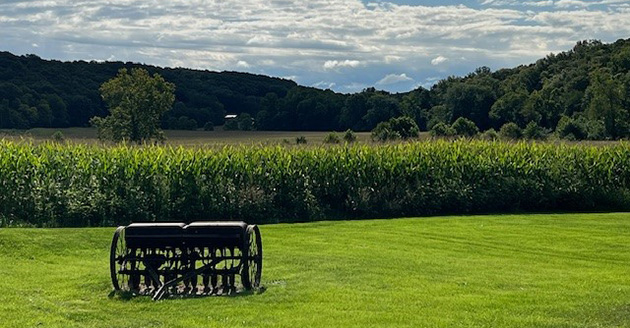In 2003, the USDA Forest Service recognized invasive species as one of the four greatest threats to forests and in 2005 it was estimated that $2.1 billion in loss and damages were due to invasive forest plants each year. From 2009 to 2019, brush management, integrated pest management and forest stand improvement through Environmental Quality Incentive Program (EQIP) and the Wildlife Habitat Incentive Program (WHIP) took place on nearly 20 million acres nationwide, while federal spending on invasive management has increased nearly five-times over since the year 2000.
Conservation cost sharing programs are intended to encourage invasive plant control in non-industrial private forests and other lands by providing financial assistance to cover the cost of control to individual landowners. While the enrollment in these programs has increased, there has not been significant research into the actual impact these programs have on containment or reduction of biological invasion, especially in timberlands.
private forests and other lands by providing financial assistance to cover the cost of control to individual landowners. While the enrollment in these programs has increased, there has not been significant research into the actual impact these programs have on containment or reduction of biological invasion, especially in timberlands.
Drs. Mo Zhou, Mike Jenkins and Jingjing Liang as well as forester Don Carlson are investigating just that through a new research grant from the National Institute for Food and Agriculture. The project, entitled “A Retrospective Assessment of Conservation Cost Sharing’s Success in Controlling Invasive Plants in Non-Industrial Private Forests,” began this spring and will continue in earnest through December 2024.
“The goal is to understand the behavioral change in controlling invasive forest plants induced by EQIP and the consequent reduction in infestation and improvements in ecosystem services,” said Zhou, an associate professor of forest economics and management. “Upon completion of the proposed research, there will be a clear answer to the extent to which conservation cost sharing has contributed to containing or reducing biological invasion, one of the top environmental concerns of the new millennium with colossal economic damages. These results will provide pivotal information for policy makers and program administrators of the NRCS to evaluate the past success of conservation cost sharing and guide future implementation.”
In Indiana 85% of forested land is privately owned. According to the 2013 National Woodland Owner Survey, invasive plants have been reduced or eliminated on 30% of NIPFs in Indiana, with one third of that being funded by cost sharing.
Zhou, along with Jenkins, a professor of forest ecology; Liang, assistant professor of quantitative forest ecology, and Carlson aim to evaluate whether and to what extent cost-share assistance is successful in controlling invasive plants in non-industrial private forests as well as observing the extended impact of cost sharing over time.
The research team will collaborate with the Indiana Natural Resources Conservation Service (INRCS), the Indiana Forestry and Woodland Owners Association (IFWOA) and the Indiana Woodland Steward (IWS) to distribute questionnaires to private forest landowners and later conduct a forest vegetation inventory on some of the forests to evaluate invasion severity, biodiversity and timber productivity. Economic and ecological modeling will then be used to process both the survey and inventory data and help understand the comprehensive environmental impacts of cost sharing.
Carlson, a forester who has been working in Indiana’s woodlands for the last 26 years, hopes the research will provide clarity on the return on investment of both time and money into invasive species control.
“My particular interest in this project is to better understand how our control measures have helped or hurt a site,” Carlson said. “I know that my control efforts have evolved over time as I’ve learned how to battle various invasives. There is no magic pill that works for all invasives. Even on well-managed woodlands where control measures have been effective, non-native invasive plants will again invade and adapt. Tradeoffs are a real problem as the control efforts themselves can impact and alter forest plant communities thereby creating new niches for invasive plants to occupy. When one group of species is controlled, others will often take their place. Through this project, we hope to learn whether the control was worth the effort and the money invested, or if we exchanged something bad for something worse.”
Jenkins will evaluate the response of forest tree reproduction and growth due to the removal of invasive plants.
“Invasive plants, in particular invasive shrubs, can suppress the germination of native tree seedlings,” Jenkins said. “In the long term, this can prevent the recruitment of new canopy trees and reduce the species diversity and productivity of forests.”
Liang will focus on assessing the effectiveness of cost-share assistance in controlling invasive plants in terms of biodiversity.
“Because biodiversity underpins forest ecosystem functionality and services, as well as diverse assemblages of forest flora, fauna, and microbes, characterizing biodiversity is an essential research task not only to this project, but also in the overall research scheme of quantifying global biodiversity patterns on which the FACAI Lab has been working,” Liang said.
In addition to providing a look at the actual success of past cost sharing efforts, the results of this research will help guide future policies of cost sharing programs, while optimizing the use of public funds for biological conservation and protecting the natural environment, including timber resources and ecosystem services.





